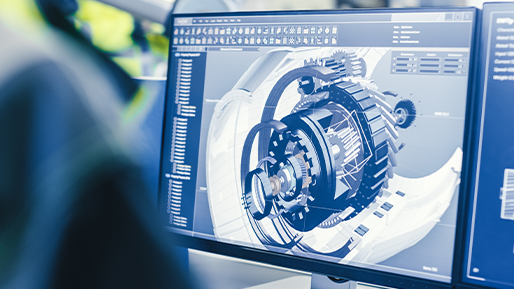
Losing a tooth impacts more than just appearance—it can affect confidence, chewing, and oral health. Advances in fixed tooth replacements, like dental implants and bridges, now provide more reliable and aesthetically pleasing solutions. This blog covers the latest innovations in restorative dentistry to help you explore your options.
Why Fixed Tooth Replacements Matter
While missing teeth might seem like an isolated problem, they can create a cascade of oral health issues, including bone loss, misalignment of surrounding teeth, and gum deterioration. Fixed tooth replacements provide a long-term solution to these problems, offering stability, functional restoration, and an improvement in appearance. Here’s why fixed solutions, rather than removable dentures, are becoming the gold standard in restorative dentistry:
- Stability and Longevity: Unlike dentures, fixed replacements stay in place, offering secure and lasting results.
- Ease of Maintenance: With proper care, fixed replacements require no more upkeep than your natural teeth.
- Aesthetic Appearance: Modern fixed replacements closely mimic the look and function of natural teeth.
Now, let’s examine the groundbreaking advancements shaping the future of fixed tooth replacements.
1. Revolutionary Dental Implant Technology
Enhanced Implant Materials
One of the biggest advancements in dental implants is the use of improved biocompatible materials. Titanium has long been the industry standard due to its strength and durability, but newer materials like zirconia are gaining traction. Zirconia is not only as durable as titanium but also offers a tooth-colored finish, appealing to patients seeking a more natural look.
Immediate Load Implants
Traditionally, patients had to wait three to six months after implant placement before receiving a permanent crown. However, advancements in immediate load implants allow patients to have their replacement teeth placed on the same day as the implant procedure, minimizing treatment time without sacrificing quality.
Digital Implant Planning
Computer-aided design and manufacturing (CAD/CAM) have revolutionized how implants are planned and placed. Dentists now use 3D imaging to create detailed digital maps of a patient’s jawbone. This technology ensures precise implant placement with minimal invasiveness, boosting success rates and accelerating healing.
2. Innovative Fixed Dental Bridges
Zirconia-Based Bridges
Zirconia is not just enhancing implants; it’s also transforming fixed dental bridges. Unlike traditional materials like porcelain fused to metal (PFM), zirconia bridges are strong, lightweight, and exceptionally lifelike in appearance. These bridges are resistant to chipping and staining, making them a lasting option for tooth replacement.
Implant-Supported Bridges
For patients missing multiple teeth in a row, implant-supported bridges are a game-changer. Instead of relying on adjacent natural teeth for support, these bridges are anchored to implants, providing superior strength and preventing damage to healthy teeth.
Digital Impressions
Remember the messy, uncomfortable molds used for traditional impressions? Advancements in digital technology have replaced these with intraoral scanners. These scanners create precise digital models of the mouth, ensuring a perfect fit for custom bridges while enhancing patient comfort.
3. Cutting-Edge Techniques in Bone Regeneration
Often, fixed tooth replacements require sufficient jawbone density for proper support, but bone loss is a common issue for individuals with missing teeth. Innovative techniques in bone regeneration are addressing this challenge.
Bone Grafting Innovations
Traditional bone grafting procedures can take months to heal, but new bioactive materials, like synthetic bone and growth factor-infused grafts, are speeding up this process. These advancements are making it possible for more patients than ever to qualify for fixed replacements like implants.
Guided Tissue Regeneration (GTR)
GTR involves placing a barrier membrane around the affected area to encourage bone and tissue growth while preventing encroachment by unwanted tissue. With this highly targeted technique, patients with significant bone loss can more quickly achieve the regenerative support needed for fixed tooth replacements.
Piezosurgery for Bone Preparation
Unlike traditional surgical drills, piezosurgery uses ultrasonic vibrations to selectively cut bone while preserving surrounding tissue. This minimally invasive approach not only reduces healing times but also increases the precision of procedures like implant placement.
4. Digital and AI-Driven Dentistry
3D Printing
3D printing has become a vital tool in dentistry, enabling the production of crowns, bridges, and implants with exceptional precision. Customized prosthetics can now be created in hours instead of weeks, speeding up the entire treatment timeline while enhancing accuracy.
AI-Powered Solutions
Artificial intelligence is transforming diagnostics and treatment planning. AI algorithms analyze X-rays and CT scans to help dentists identify the best treatment options for patients. Additionally, AI enhances the accuracy of prosthetic designs, leading to better-fitting replacements.
Teledentistry for Follow-Up Care
Follow-up consultations are vital to the success of fixed tooth replacements. Teledentistry solutions are enabling patients to discuss concerns, ask questions, and receive expert advice remotely, saving time and travel.
5. Biomechanics and Advanced Prosthetics
Biomechanics is an emerging field making waves in fixed tooth replacements. Researchers are designing prosthetics that mimic the strength, flexibility, and natural sensation of real teeth.
Smart Materials
Some prosthetics now incorporate piezoelectric materials that respond to chewing forces, giving patients a realistic dental experience. These smart materials reduce wear-and-tear while offering superior comfort.
Nanotechnology Coatings
Nanotechnology is being used to create coatings that improve the durability and antimicrobial properties of dental prosthetics. These coatings not only extend the lifespan of teeth replacements but also lower the risk of infections post-surgery.
Clinics of the Future
With advancements in materials and technology, dental clinics of the future will look vastly different from what they are today. If you’re exploring your options locally, searching for “ClearChoice Dental near me, Honolulu” may connect you with providers who specialize in these innovative solutions.
Conclusion
Fixed tooth replacements have evolved dramatically, providing patients with highly reliable, minimally invasive, and aesthetically pleasing solutions for missing teeth. Whether you want the precision of digital implant planning, the durability of zirconia bridges, or the cutting-edge benefits of biomechanics, today’s advancements offer something for everyone.